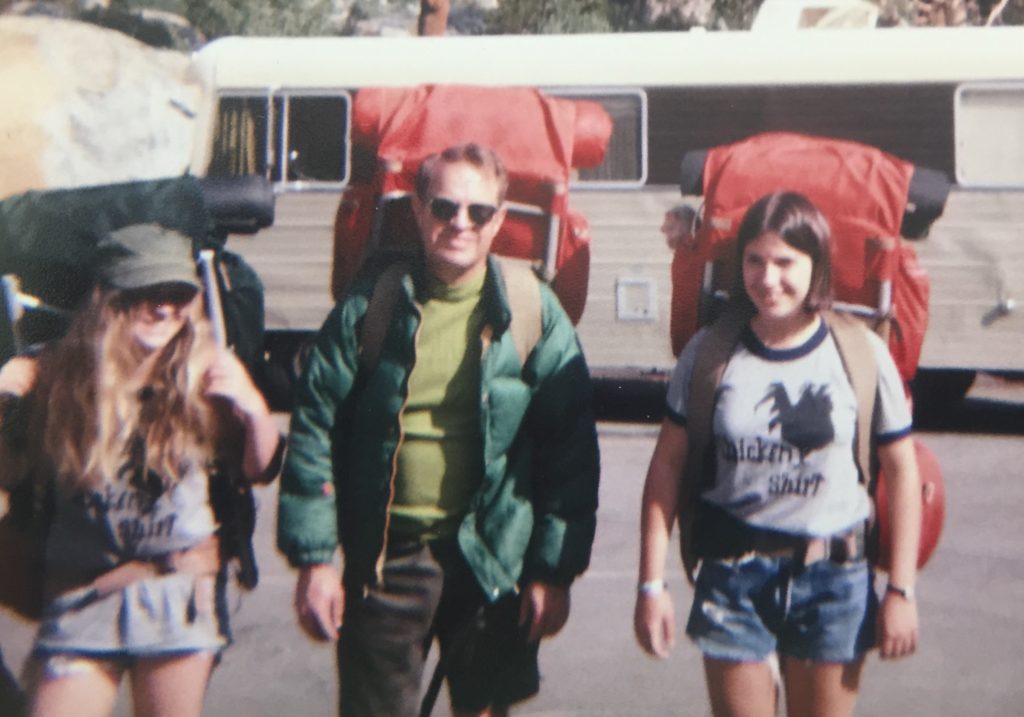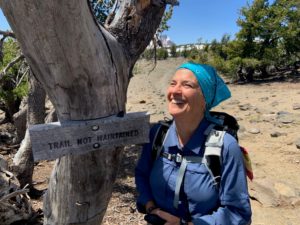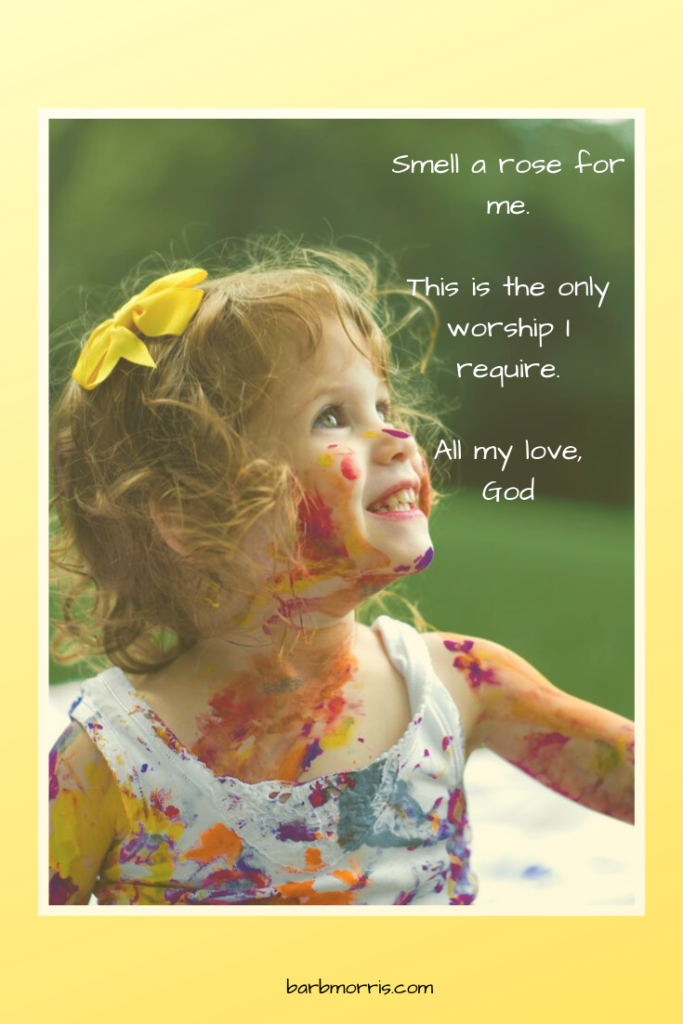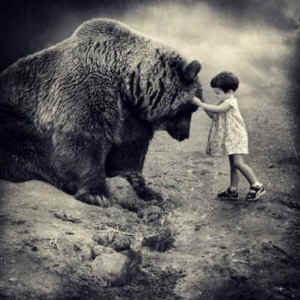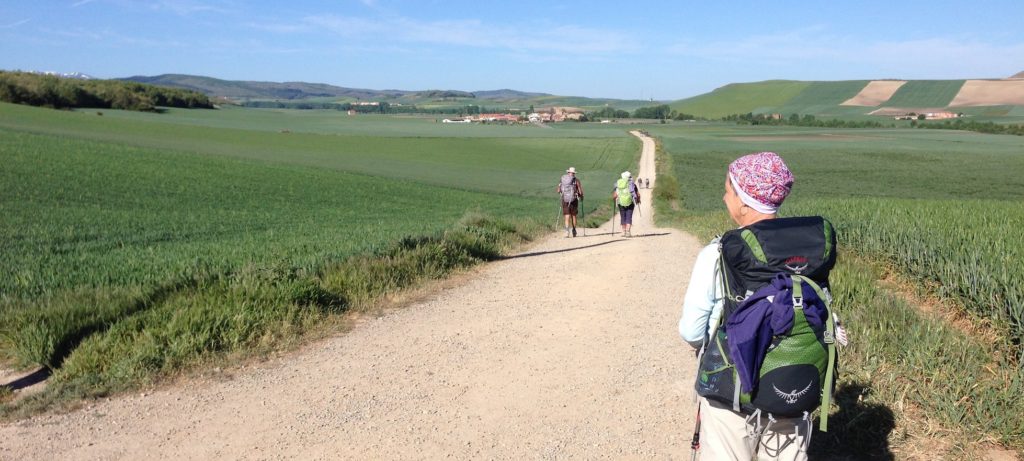
Today is Maundy Thursday, the beginning of the Triduum, the three holiest days of the Christian church year. These three days—Maundy Thursday, Good Friday, and Easter—are the crux of the matter, literally. The story of Jesus’ crucifixion, death, and resurrection are the heart of the Christian story.
Even if you’re not Christian anymore or ever, these three days are the heart of your story as well.
Death and resurrection are the way of things. We were born to die and be reborn over and over until our physical selves can’t hold us anymore. We suffer when we resist this basic truth—to be an Earthling is to be constantly dying and rising again. Change isn’t linear or always pretty. To be alive is to die and rise again, over and over, messily, imperfectly, gloriously.
As we grow, change, and evolve, we will find that we need to shed our too-small skins. I feel like I’m shedding my skin like a snake these days. Dropping identities and stories left and right. Shreds of (metaphorical) tissue-thin skin fall off me constantly. I feel messy, imperfect, and maybe just a little glorious.
This is the Easter story. This is the human story. This is our Earthling story. Jesus’ story is our story. Jesus’ death is our death, and when he rises again on Easter, he rises for all of us. He shows us the way home.
This excerpt from the last pages of my novel Lost and Found (available for free download here) describes a dream of Martha, my peregrina hero. In her dream, Martha integrates cut-off parts of herself, sheds her now too-small skin, and becomes a new creation.
Martha wakes up before sunrise in the albergue in Foncebadón, a few kilometers down the mountain from La Cruz de Ferro. She lies in bed listening to the sounds of pilgrims waking up and getting on with their days – the rustling of convertible pants and water running in the communal bathroom. She’s tired of writing. She’s tired of thinking. Today she only wants to walk in beauty. She yearns to shed this old skin that keeps her small and tired. She feels the pinching of the chrysalis. It’s time to emerge. She feels the pinching of the too-small skin. It’s time to shed. The snakeskin is a more apt metaphor than the chrysalis. She feels more like a snake than a butterfly. She feels low to the ground and slithery and heavy, not light and airy and floaty. She feels powerful. And beautiful.
Last night’s dream floats into Martha’s awareness. In the dream, she enters a cave in search of something she’s lost. In the cave is a cage full of children, all about seven years old. They’re girls, and they’re mangy and crazed. She’s frightened and repulsed. They look up when they see her, all except one feral child who’s sitting in the corner, muttering and chewing her snarled hair. Like refugees, they crowd to the chain link fence that encloses them and reach out their hands to her.
Martha’s heart sinks. She doesn’t want to know this. She doesn’t want to know these children are here. She doesn’t want the responsibility of knowing they’re here. What is she supposed to do with them? Clearly, they can’t stay here, and now that she knows they’re here, it’s her responsibility to take care of them. Her cheese is falling off her cracker. She feels unhinged, because she knows beyond a shadow of a doubt that these girls are parts of herself.
That one’s Courage and the one over there is Creativity. Those two are Imagination and Intuition. There’s Playfulness. The feral one with the snarled hair, the one sitting on the dung heap in the corner, muttering and biting her fingernails, is Rage. She sees Desire and Tenderness, too.
Martha feels a hand in hers and looks down to see clean and tidy uncaged children surrounding her. These are the little girls who have been with her all these years – Worry, Anxiety, and Fear, and the sturdiest of them all is Sadness. They’ve been faithful companions, and they tell her they’ve missed their sisters.
They tug on her hands to show her where the gate is. They tell her that her job is to let their sisters out of the cage. She’s safe and it’s okay. It’s time to shed the skin that keeps them in. It’s time to tell the truth and to acknowledge the sadness, yes. But more than that, and even scarier, they want her to let them rest a little. Sadness, Worry, Fear, and Anxiety would like to share the burden with Play and Anger and Courage and Imagination.
They understand this means Martha won’t feel in control anymore. The parts of her who want to explore and create will take her to places she didn’t even know existed. They won’t let her stay small and quiet and hidden.
Fear says, “Martha, I’m tired of steering you and keeping you safe. How about you let me share the load with my sisters? I know you’re scared. You’re scared that you’re going crazy. You’re not crazy. You’re brave. You’ll be even braver when you let Courage out to play with us.”
“How do I love them?” Martha asks Sadness and Worry. “How do I take care of them?”
“You know how to take care of them,” says Hope. Where had she come from? “You’re compassionate and strong, Martha. You only have to let yourself be reborn.”
“Here,” Hope says, and unlocks the gate. “Come out,” she says to the caged girls, “and let’s take care of Martha.” The little girls come out – some with shouts of joy and some with trepidation – to join Hope around a pool. The pool is surrounded by ferns, mosses cling to the wet rocks, and steam rises from it.
The girls slowly and reverently help Martha disrobe and lead her to the pool. They gently urge her to lie down in the warm water. They stroke her and rub her and sing to her. Martha realizes they’re rubbing off her old skin. They raise her up and walk her to where the sun is entering the cave. They rub her dry with soft, thick, warm towels. Her new skin is thin and porous. Martha feels both raw and incredibly strong. The girls rub her new transparent skin with oil, still singing.
Martha sits down on a granite boulder and opens her arms. One by one the little girls crawl into her chest. Martha is big enough to hold all of them now. Last to crawl back in is Hope. She reaches out and hugs her mom as she returns where she belongs. Martha looks inside her heart. Hope and the little girls are playing in the grass by the side of the desert creek, watched over by their vigilant guardian.
Fully awake now, Martha emerges from her sleeping bag. Her dad’s bunk is empty. She wants to mark this metamorphosis. She digs out the scissors in her foot care kit and goes to the garden of the albergue. Her only companions are the chickens. With the scissors made for cutting bandages, she cuts off her hair so it’s sticking out about an inch all over her head, like a halo. A messy gray halo. Hair is all over the ground. Birds will use it for nests. In this windy place it will blow away before lunchtime.
Whatever your faith or spirituality, I wish you a blessed death and rebirth.
May we trust our hearts. May we trust God, whoever and whatever Holiness is for us.
Happy Easter!
Love, Barb
Image: Jed Holdorph, 16 May 2014, Camino de Santiago

